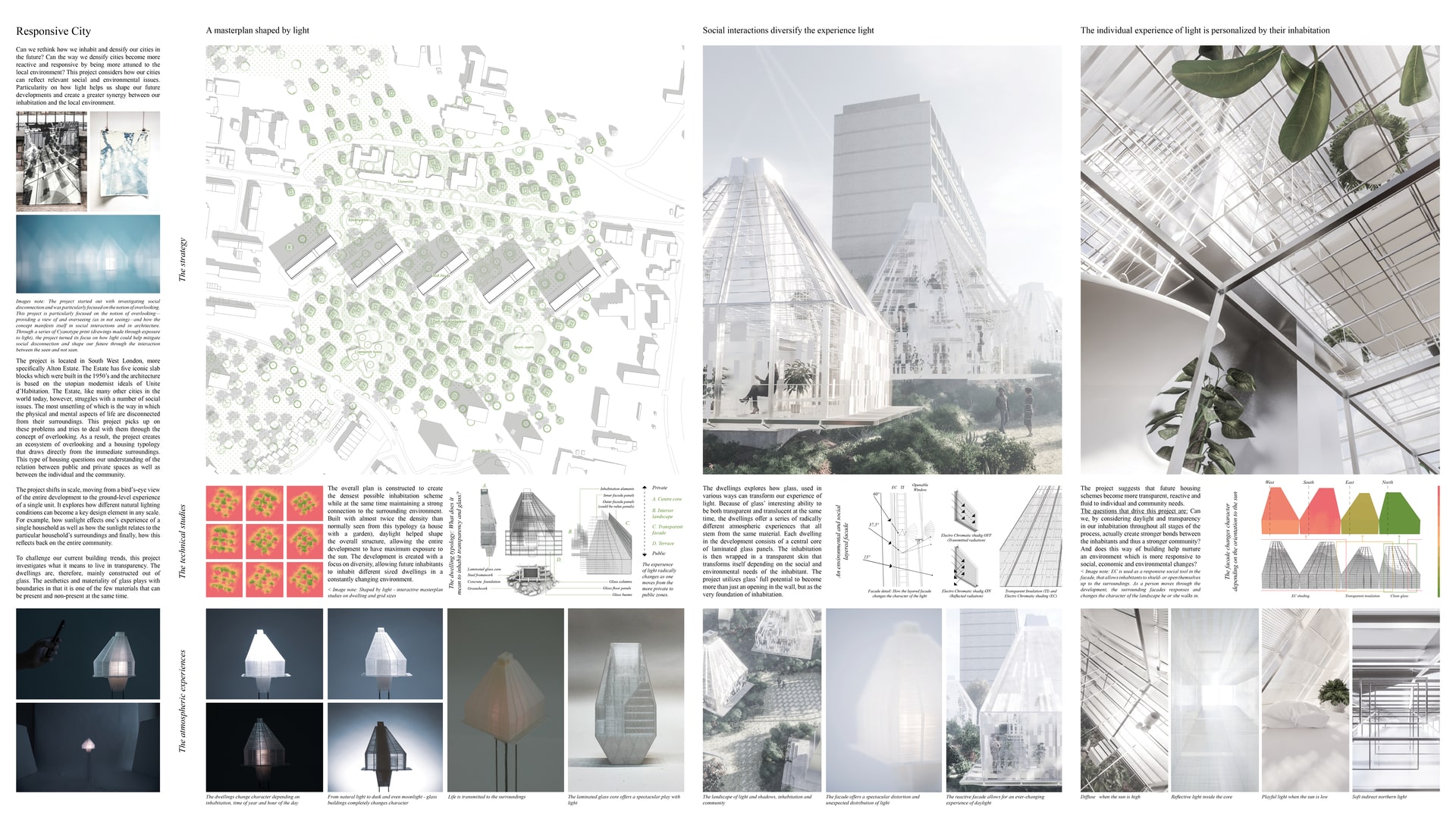Project Description
Can we rethink how we inhabit and densify our cities in the future? Can the way we densify cities become more reactive and responsive by being more attuned to the local environment? This project considers how our cities can reflect relevant social and environmental issues. This project is particularly focused on the notion of overlooking—providing a view of and overseeing (as in not seeing)—and how the concept manifests itself in social interactions and in architecture. The project is located in south west London, more specifically Alton Estate. The Estate has five iconic slab blocks which were built in the 1950’s and the architecture is based on the utopian modernist ideals of Unite d’Habitation. The Estate, like many other cities in the world today, however, struggles with a number of social issues. The most unsettling of which is the way in which the physical and mental aspects of life are disconnected from their surroundings. This project picks up on these problems and tries to deal with them through the concept of overlooking. As a result, the project creates an ecosystem of overlooking and a housing typology that draws directly from the immediate surroundings. This type of housing questions our understanding of the relation between public and private spaces as well as between the individual and the community. The project shifts in scale, moving from a bird’s-eye view of the entire development to the ground-level experience of a single unit. It explores how different natural lighting conditions can become a key design element in any scale. For example, how sunlight effects one’s experience of a single household as well as how the sunlight relates to the particular household’s surroundings and finally, how this reflects back on the entire community. To challenge our current building trends, this project investigates what it means to live in transparency. The dwellings are, therefore, mainly constructed out of glass. The aesthetics and materiality of glass plays with boundaries in that it is one of the few materials that can be present and non-present at the same time. The overall plan is constructed to create the densest possible inhabitation scheme while at the same time maintaining a strong connection to the surrounding environment. Built with almost twice the density than normally seen from this typology (a house with a garden), daylight helped shape the overall structure, allowing the entire development to have maximum exposure to the sun. The development is created with a focus on diversity, allowing future inhabitants to inhabit different sized dwellings in a constantly changing environment. Each dwelling in the development consists of a central core of laminated glass panels. The panels serve both as loadbearing elements while still offering all of the functional amenities that come with a household, such as a toilet, kitchen and storage. The inhabitation happens around the core in a fluid motion of a glass terrace landscape. The inhabitation is then wrapped in a transparent skin that transforms itself depending on the social and environmental needs of the inhabitant. The project utilizes glass’ full potential to become more than just an opening in the wall, but as the very foundation of inhabitation. Because of glass’ interesting ability to be both transparent and translucent at the same time, the dwellings offer a series of radically different atmospheric experiences that all stem from the same material. The project suggests that future housing schemes become more transparent, reactive and fluid to individual and community needs. The questions that drive this project are: Can we, by considering daylight and transparency in our inhabitation throughout all stages of the process, actually create stronger bonds between the inhabitants and thus a stronger community? And does this way of building help nurture an environment which is more responsive to social, economic and environmental changes?
